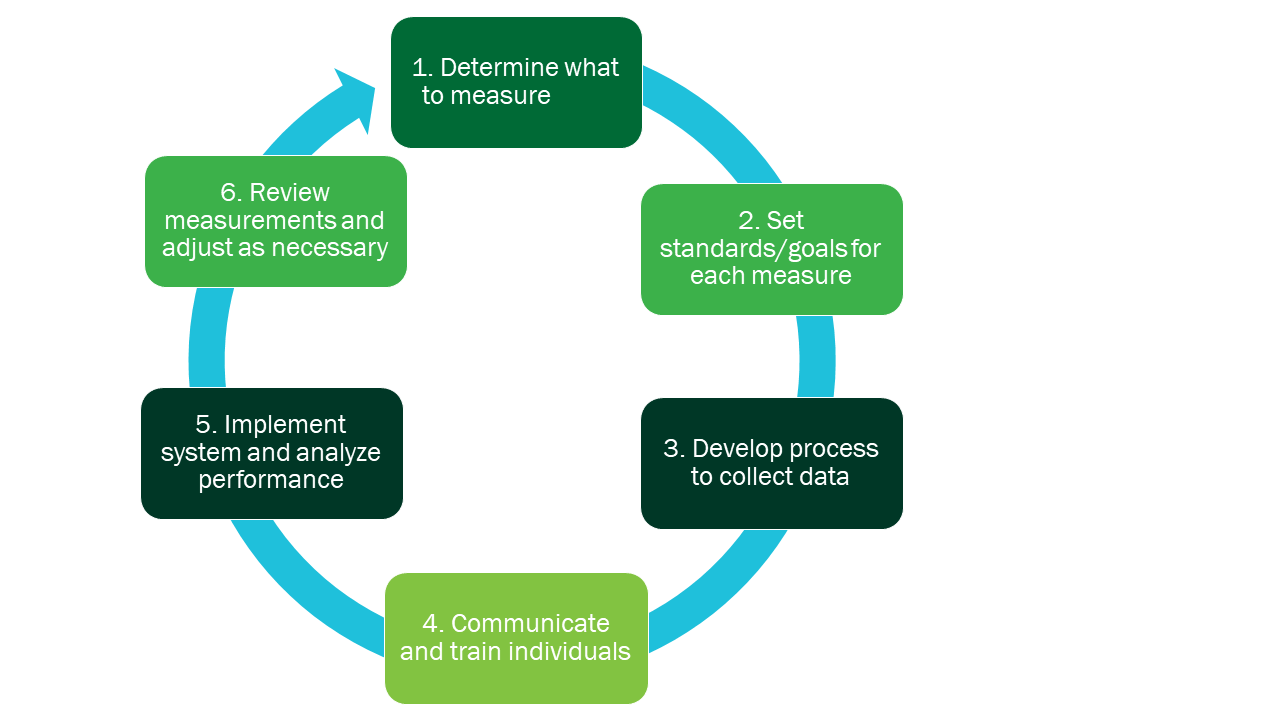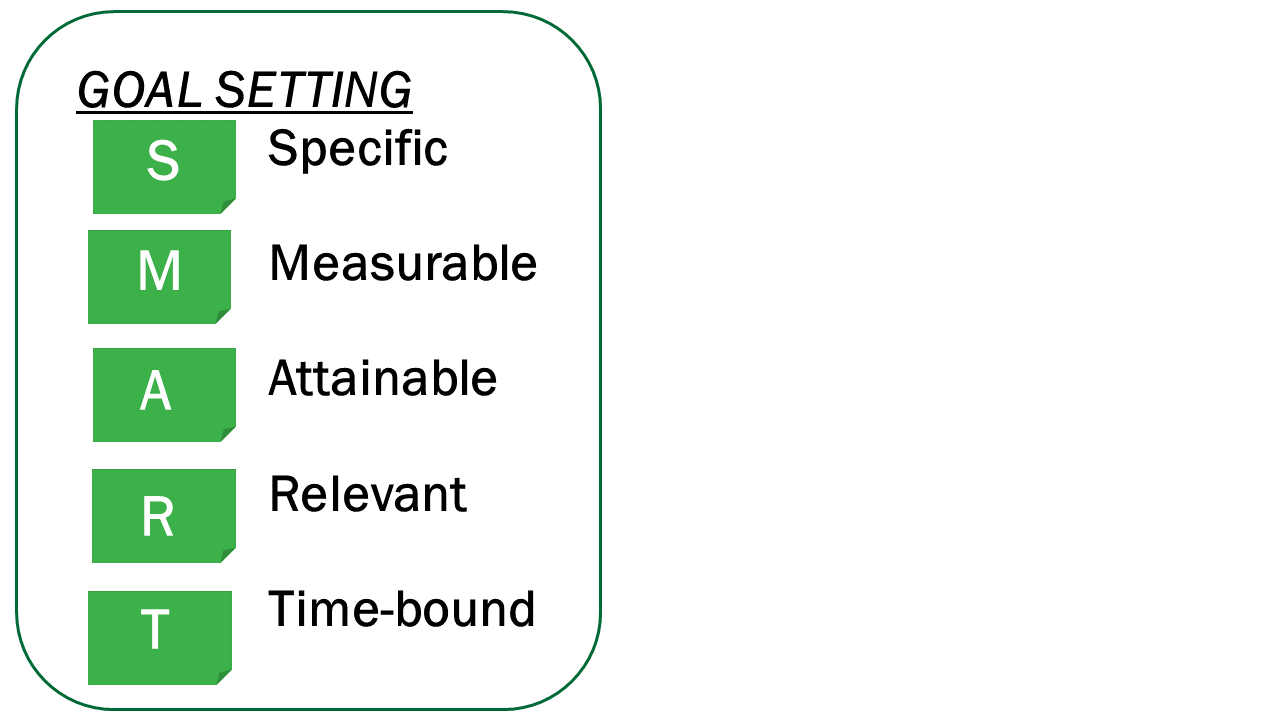Developing a procurement performance measurement system requires the leadership and support from the executive level to ensure that measurements align with corporate objectives and to commit any necessary resources for implementing it, including any technical or reporting needs.Several steps, guidelines, and decisions are necessary to ensure that the metrics put in place will result in the improvement and behavior intended.

Some organizations try to measure everything in sight, which can lead to measuring the wrong things or only measuring those areas that make the firm look good, instead of selecting the vital measurements that will make a difference in the organization. Expand each step to review what is necessary for developing and implementing an effective procurement metrics program.
Step 1: Determine what to measure.
As mentioned previously, all measurements should align with the overall corporate strategy and objectives. A good procurement measurement system will not only support the business’ operating goals, objectives, and programs, but also allow procurement personnel to understand how their decisions and actions affect the entire business. Performance measures and objectives should be organized around and relevant to procurement activities and processes, such as global purchasing, cost, strategic sourcing, quality, people, and supplier relations. Since good measurements have a clear cause and effect, processes can be mapped and current performance measured to determine which activities need to be monitored or improved. Organizations must be careful not to establish measurements that drive the wrong behavior, or that focus on functional or individual achievement. For example, measuring the number of purchase orders issued would reward behavior of smaller orders and more frequent deliveries, which may be contrary to more strategic purchasing relationships.
Step 2: Set standards / goals for each measure.
Once meaningful measures have been defined, formal goals and established standards should be identified against which performance results or outcomes can be measured. A performance standard is “the accepted, targeted, or expected value for the criterion” (APICS Dictionary, 16th edition). Performance standards set the goal while performance measures disclose how well an organization is doing to achieve the goal.
A simple way to determine appropriate measurable objectives is the following acronym:

- Specific.Measurements must be clearly understood and agreed upon by all parties.
- Measurable.Each measure must have a quantitative or qualitative objective with which to measure against, and contain at least two parameters. They must also be easy to measure and record, with information readily available and practical to measure, both cost-wise and time-wise.
- Attainable. Reasonable, achievable targets and objectives should be established for each metric. An objective should not be so easy that it requires minimal effort to achieve, yet not so difficult that it is discouraging for those trying to meet it.
- Relevant.Measurements should be relevant and acceptable to all stakeholders.
- Time-bound. Performance and reporting frequency must be established and agreed upon. This can differ from measure to measure, depending on the timeliness of the data available, how the output will be used, etc.
Step 3: Develop a process to collect data.
The data needed for attaining performance information must be easily accessible and readily available so the performance can be measured consistently. If the data is too difficult or too costly to collect, the odds of it being used decreases greatly and outweighs any benefit gained.
The following are requirements for measurement data:
- Accuracy – consistent across data sets
- Timeliness – available when required and up to date
- Completeness – everything required and at proper level of detail
- Integrity – not manipulated or influenced, person responsible should not be the one supplying the data
Technology has enhanced the ability to track and monitor performance – tracking and monitoring faster and with more powerful computations. Most business software, such as ERP systems, provide functionality for gathering data and measuring performance, which allows for the quicker assessment of problems. Today’s systems also provide functionality for self-reporting, dashboards, scorecards, and alerts to exceptions.
This proliferation of data makes it even more necessary to weed out those metrics that do not drive excellence, improve value, or that are unnecessary. For example, companies that insist they need 1200 reports on a weekly basis to run and monitor their business should analyze how many of these reports are actually viewed or have actionable results.
Step 4: Communicate and train individuals on performance measures.
Once developed, performance measures must be visible and communicated to all participants. This includes a clear understanding of expectations and the means to achieve the objectives. How output will be used and the frequency and reporting required should be included. If necessary, those responsible as well as participants in the measurement should be educated and trained on accountability, methods to be used for gathering data, and most importantly, how to use the output to realize objectives and improve performance.
Step 5: Implement the system and analyze performance.
If new types of measurements or data collection procedures are to be used, it is often beneficial to do a pilot or trial run to ensure everyone understands their role and that the data is readily available.Once that occurs, actual performance of the identified metrics should be tracked and measured in the frequency previously determined. Using data collected, any gaps between performance and quantifiable targets should be documented, including any behaviors that were not expected. Corrective actions should be determined and communicated to the participants.
Step 6: Review measurements and adjust as necessary.
Periodic reviews are necessary in order to ensure that measurements have not become obsolete, or performance objectives are no longer valid. There are various reasons that measurements should be re-evaluated in order to remain meaningful:
- Competitive strategies, products, and customers change, which can change strategic priorities and objectives.
- Targets are reached and sustained, so effort should be moved to another measure to allow for additional improvements.
- No one is using the measurement information, meaning it might be outdated or no longer relevant.
- Metrics used year after year might cause a department to stop continuous improvement.Whatever the reason, metrics should be considered disposable, and must be flexible enough to change as needs change.
